Vietnam, an incredible Southeast Asian country known for its beauty and resilience, also has a wonderful collection of monuments that celebrate its history. From ancient imperial citadels to war memorials and Buddhist pagodas, the monuments in Vietnam offer a glimpse into this country’s past. Monuments are an important aspect of Vietnam’s identity. Monuments capture the history that makes us appreciate a country, its architecture, and its people. Explore the must-visit monuments and plan your journey through the nation’s fascinating cultural and historical landmarks.
10 Popular Monuments In Vietnam
Here are some of Vietnam’s most well-known monuments, with information on their locations and distinguishing features, offering you an insight into the rich history.
1. Imperial City Of Hue
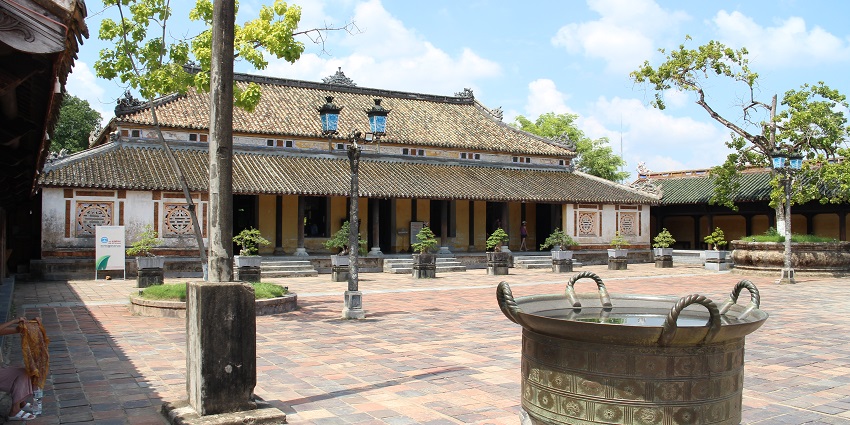
Photo: Suicasmo / Wikimedia Commons
The Imperial City of Hue, situated in central Vietnam, is a site inscribed under the UNESCO World Heritage program and is considered one of the famous monuments of Vietnam. Initiated by Emperor Gia Long at the turn of the 19th century, it stayed as the political, cultural, and religious centre of the Nguyen dynasty for more than one hundred years. The complex rests on a vast square citadel with drop walls of stone. Within the grounds is the Purple Forbidden City, which was once open for the emperor and his relatives, with beautiful palaces, old temples, and tranquil gardens.
Entry Fee: ₹330 / ₫100,000
Timings: 8 AM – 5 PM
2. Ho Chi Minh Mausoleum
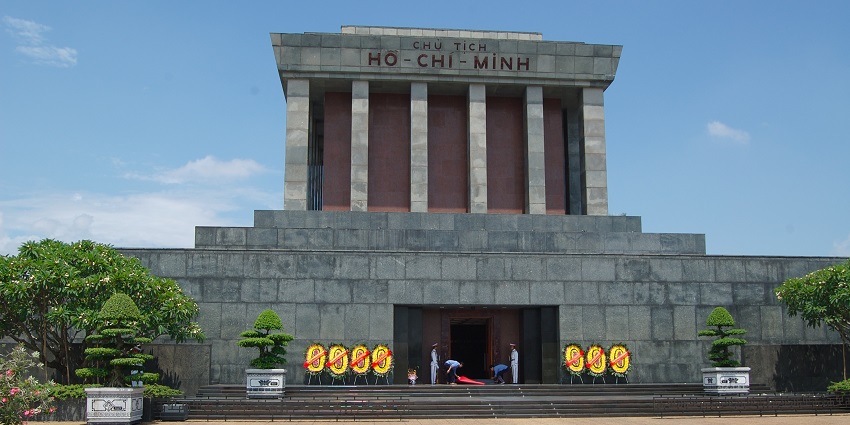
Photo: Gregor Dodson / Wikimedia Commons
Hanoi’s Ho Chi Minh Mausoleum, found in Ba Dinh Square, is a highly respected monument in the country. Here, the embalmed body of Ho Chi Minh, who helped the country win its independence, is displayed. From 1973 to 1975, the structure was built and features a grey granite style that represents the Soviet architectural style and a sense of strength. Inside, people can pay homage in a calm and organised way. Over 250 varieties of Vietnamese plants from all parts of the country are carefully tended in the surrounding gardens to reflect national unity.
Timings: 7:30 AM – 10:30 AM (closed on Mondays & Fridays)
3. My Son Sanctuary
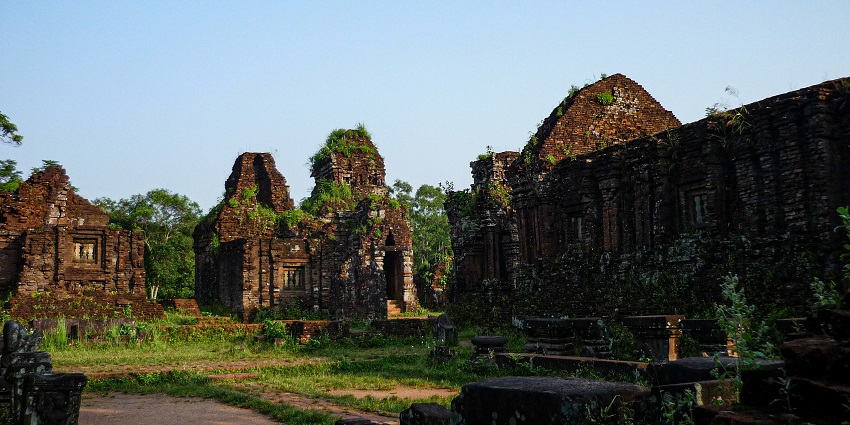
Photo: Philip Nalangan / Wikimedia Commons
My Son Sanctuary is an incredible archaeological site located in Quang Nam Province, central Vietnam. This UNESCO World Heritage Site was an important spiritual and political centre of the Champa kingdom between the 4th and 13th centuries. My Son is situated in a lush valley surrounded by mountains and consists of a group of red-brick temple ruins, the majority of which are dedicated to Shiva. The temples were built using a technique that has perplexed archaeologists for decades: intricate carvings, bas-reliefs, and stone sculptures with Indian Hindu architectural influences.
Entry Fee: ₹200 / ₫60,000
Timings: 6:30 AM – 5:30 PM
4. War Remnants Museum
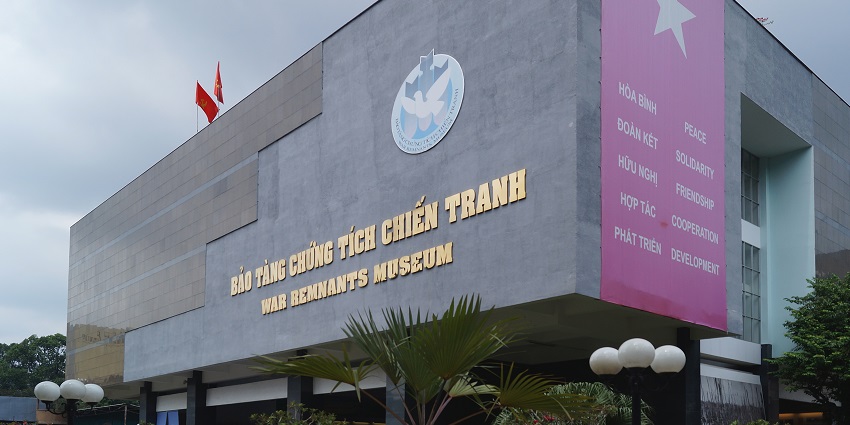
Photo: Prenn / Wikimedia Commons
Located in Ho Chi Minh City, the War Remnants Museum helps people remember what happened during the Vietnam War and its aftermath. Established in 1975, the museum has a big collection of photos, old military stuff, and stories from veterans that help show what it was really like to fight in these wars. Among its most striking exhibits are photos that show what happened to people who were affected by Agent Orange, models of prison cells, and a few real planes taken from American soldiers that you can see outside.
Entry Fee: ₹100 / ₫40,000
Timings: 7:30 AM – 6 PM
5. Temple Of Literature
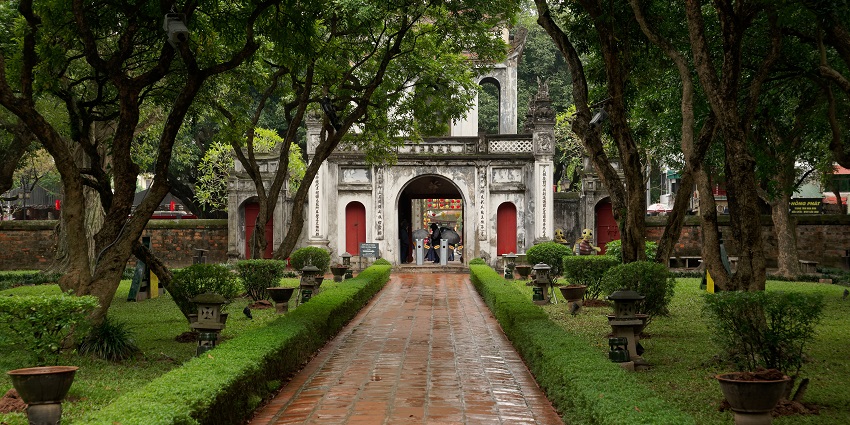
Photo: Jakub Hałun / Wikimedia Commons
One of the top monuments in Vietnam, the Temple of Literature in Hanoi, is dedicated to Confucius and scholars. Founded in the year 1070 during the Ly Dynasty, the Imperial Academy was Vietnam’s first national university specialised in the Confucian education of selected students. You will find traditional Vietnamese features in its five courtyards and the grand roofed pavilions, as well as peaceful gardens throughout the temple. The top students from the Ming dynasty are honoured at Qingliang Pavilion, where stone steles were placed on turtle-shaped pedestals made in the 15th century.
Entry Fee: ₹80 / ₫30,000
Timings: 8 AM – 6 PM
6. Cu Chi Tunnels
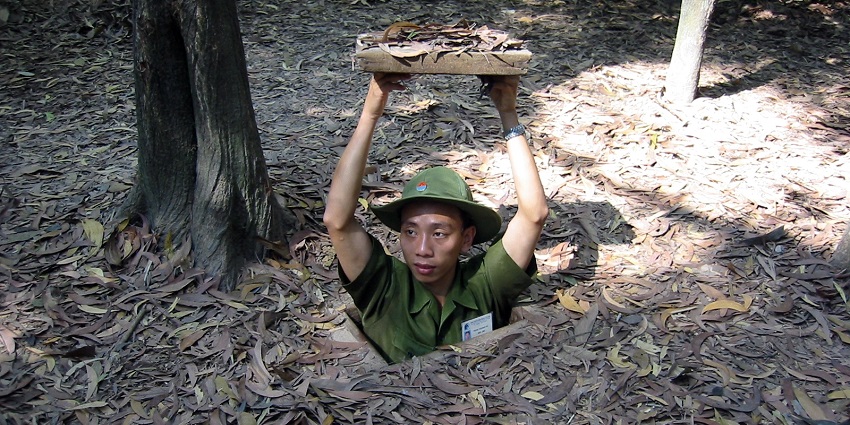
Photo: Thomas Schoch / Wikimedia Commons
Cu Chi Tunnels are located around 35 km northwest of Ho Chi Minh City and have great significance because of their use during the Vietnam War. These tunnels, stretching across 250 kilometres, provided a base for the Viet Cong to hide, communicate, supply their forces, and make surprise attacks. People can see different sections of the tunnels, such as small passageways, hidden doors, makeshift kitchens, and the place where they once lived. The museum brings to life the nation’s history during the war and shows what its people endured and overcame back then.
Entry Fee: ₹130 / ₫50,000
Timings: 8 AM – 5 PM
7. Thang Long Imperial Citadel
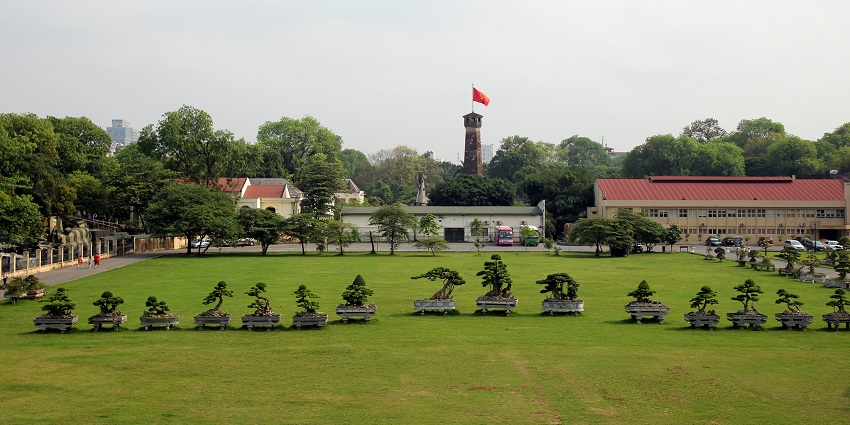
Photo: Bex Walton / Wikimedia Commons
Thang Long Imperial Citadel, which is in Hanoi’s centre, is listed on the UNESCO World Heritage List and is among the most significant historical monuments in Vietnam. During the 11th century, the Ly Dynasty built the city, which then remained the political centre for 13 centuries. The citadel mixes the architecture of ancient Vietnam with features from Chinese and Southeast Asian styles. Some of the main attractions in Hanoi are the Flag Tower, Doan Mon Gate, and the site showing artefacts from the many dynasties.
Entry Fee: ₹100 / ₫40,000
Timings: 8 AM – 5 PM
8. One Pillar Pagoda

Photo: thalling55 / Wikimedia Commons
The One Pillar Pagoda is one of the main sights in Hanoi and is known for representing the nation’s strong spiritual culture. Counted among the iconic historical places in Hanoi, the pagoda was built by Emperor Ly Thai Tong in 1049 and is well known for its small wooden temple built on a tall stone column surrounded by a pond featuring lotus flowers. Purity and enlightenment are what the symbol of the lotus means in Buddhist beliefs. Since a lotus blossom is important in Buddhism, the pagoda was designed to look like one, and it was meant to bring blessings to the emperor’s family.
Entry Fee: ₹82 / ₫25,000 VND
Timings: 8 AM – 5 PM
9. Po Nagar Cham Towers
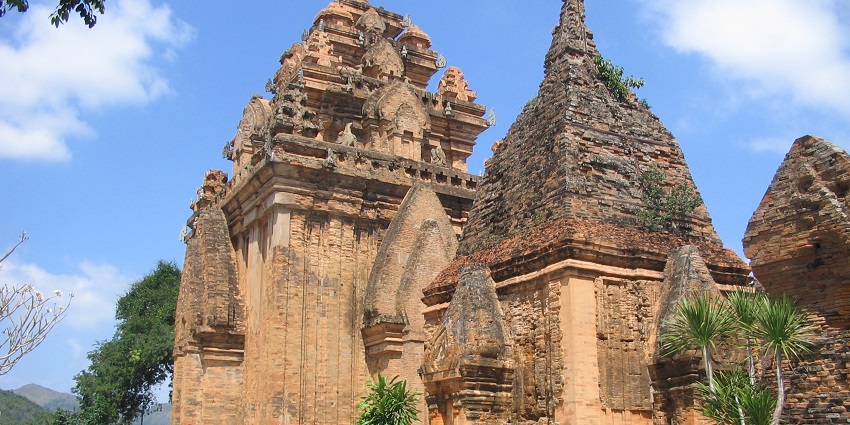
Photo: wileypics / Wikimedia Commons
The beautiful Po Nagar Cham Towers in Nha Trang represent the heritage of the Cham people and are considered some of the best monuments in Vietnam. From the 7th until the 12th century, sacred towers were built to honour Yang Po Nagar, the country’s protectress, who is still worshipped today. Initially, there were eight towers, yet now only four exist, each with attractive carvings and careful brickwork inspired by Cham architecture and Hindu art. If you climb the tallest tower, you can enjoy a 360-degree view of the Cai River and the surrounding mountains.
Entry Fee: ₹70 / ₫25,000
Timings: 6 AM – 6 PM
10. Ba Dinh Square
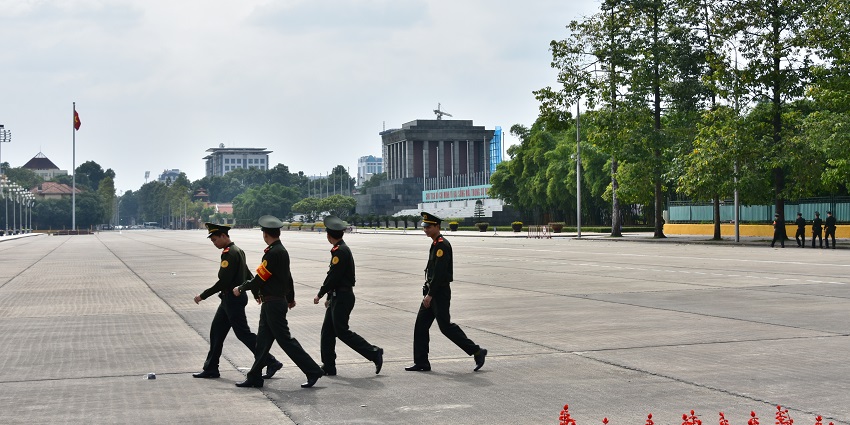
Photo: Richard Morte / Wikimedia Commons
Ba Dinh Square is the heart of Hanoi, and it’s one of the most famous landmarks in Vietnam, where history and culture meet. It is famously known for being the place where President Ho Chi Minh read the Declaration of Independence on September 2, 1945, thus inaugurating the Democratic Republic of Vietnam. The vast square takes up about 13 hectares and is surrounded by important buildings like the Ho Chi Minh tomb, the President’s Palace, and the National Assembly building. Ba Dinh Square is the place where Vietnamese people usually come together to join in festivals and important government events.
Timings: 24*7
From sacred temples to revolutionary landmarks, the monuments in Vietnam provide a fascinating look into the country’s rich history. These are vibrant chapters in Vietnam’s story of dynasties, colonisation, and independence. Whether you are walking down the poetic courtyards of the Temple of Literature or exploring the subterranean Cu Chi Tunnels, every destination welcomes you to know Vietnam better. Plan a trip with TripXL and experience the eternal beauty of Vietnam.
Cover Photo: Diego Delso / Wikipedia


 WhatsApp
WhatsApp
 Twitter
Twitter









